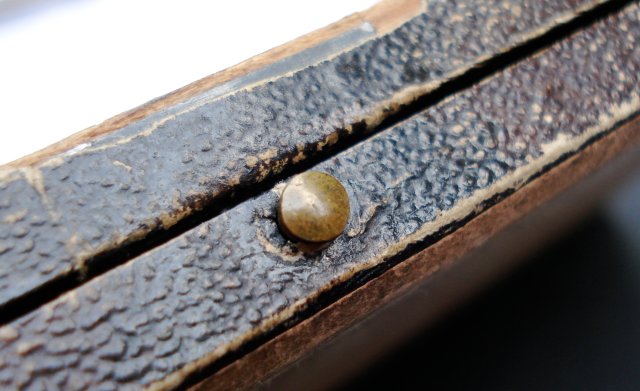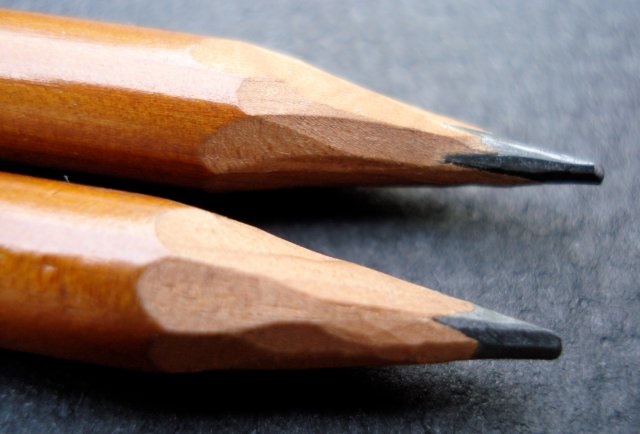
The Faber-Castell 250th anniversary pencils.

The raised lettering is remarkable.

The caps acknowledge the anniversary year.

Congratulations to Faber-Castell on their 250th anniversary year!

pencil talk | pencil reviews and discussion
exploring the art and science of pencils since 2005

The Faber-Castell 250th anniversary pencils.

The raised lettering is remarkable.

The caps acknowledge the anniversary year.

Congratulations to Faber-Castell on their 250th anniversary year!
A 250th anniversary pencil from Faber-Castell.
Though – it unfortunately looks like products we’ve already seen. The special imprint Castell 9000 pencils given out at Paperworld probably have more cachet as an anniversary item.

Lothar von Faber’s Polygrade is a historically important pencil. Launched in 1837, and sold until the early 20th century, the product offered pencils in a system of standard grades, and established the Faber name globally. The pencils were also the first by Faber to use the Conté/Hardmuth process of blending graphite with clay, an improvement over the use of raw graphite.
The particular box we see here is rather ornate, and reflects the price and status of the Polygrade pencils in the 19th century. 1851, 1853, and 1855 prizes are mentioned on the box. The pencils within are additionally stamped “E. Faber 133 William St. NY”. Eberhard Faber is known to have departed that address in 1877, so the pencils can probably be dated from 1855 to 1877, placing them closer to Faber’s 1761 establishment than the present. (2011 is Faber-Castell’s 250th anniversary.)
A metal push button mechanism to open the box is still functioning:

Eight of the original set of ten remain. All are a bit worse for wear. The imprints of the softer grades are the best preserved.
The inside cover mentions, in French and English, the pencil grades:
BBBB and BBB: very soft and very black
BB: soft and very black
B: soft and black
F: less soft and black
HB: middling
H: hard
HH: harder
HHH and HHHH: very hard


We would call these 3B and 4B today:

Though quite faded, the imprints are beautiful:

The patina of the wood is certainly no less attractive due to the age.

The previous owner performed some nice hand sharpening:

What is perhaps most interesting is the other end of the pencil: these pencils have rectangular leads, and use the historic construction method of placing the square lead in a square cavity, then gluing on the remaining third of the pencil. This was the technique used prior to the use of sandwich slats.
Note as well that the leads vary in size – just like modern quality pencil sets, the cores of the softer grades are larger.

Do they still write? Of course they still write! On a toothy paper meant for charcoal or pastel:

And the HB on a good quality writing tablet:

Well over a century after their manufacture, these pencils continue to impress.
Further reading and references:
The Pencil, A History of Design and Circumstance by Henry Petroski, has many references to this pencil. Two chapters in particular are relevant. Chapter 6, “Does One Find or Make a Better Pencil?”, discusses the history of pencil construction, and Chapter 11, “From Cottage Industry to Bleistiftindustrie”, focuses on the establishment of the pencil industry, driven by the Faber family and products such as the Polygrade.
Eberhard Faber’s Pencil Factory by Mary Habstritt at Archive of Industy. (PDF format.) A nice three page summary of the history of Eberhard Faber business.
Eberhard Faber Pencil Company Historic District Designation Report at City of New York. (PDF format.) Though officially about a municipal zoning matter, the report has an excellent history of the Eberhard Faber company, and is illustrated with maps and many photos of the historic Eberhard Faber buildings.

Spotted at a local store – Faber-Castell Grip 2001s (Grips 2001?) in black and white with grey dots.
Nice, but I am disappointed that Faber-Castell hasn’t issued a pencil with a historical theme in their 250th anniversary year.
Take a look at this Pelikan Souverän M101N reissue. It’s already getting a lot of press pre-issue. Faber-Castell has no shortage of classics in their own archives, and could easily create some similar reissues/reinterpretations.
Pencil manufacturers have been receiving some major media attention recently.
Behind the scenes, I would guess that Faber-Castell’s capable public relations staff have been very active. Faber-Castell’s 250th anniversary is next year, and the celebrations are starting. See this YouTube video for a behind the scenes view of how the “250” human logo was formed and photographed.
An article in the Wall Street Journal suggests some local tensions in Nürnberg, with a friendly rivalry between Faber-Castell and Staedtler. The article mentions a 1995 lawsuit against Staedtler regarding Staedtler’s previous claim to have originated with their namesake Friedrich Staedtler in 1662, rather than J. S. Staedtler’s company founding in 1835.
Speaking of Friedrich Staedtler, a Nürnberg school was recently renamed in his honour.
There was also an article on Faber-Castell in the Economist, a periodical we’ve previously mentioned for their coverage of the pencil industry.
The Economist mentions a different lawsuit, a century earlier. There seems to be a thread between the past and present – the Faber company has long appreciated a good court battle. This case is the overturning of the Hyman erser patent in the US Supreme Court in 1875. I learned about this at The IPKat blog.
The ruling by Mr. Justice Hunt can be found here. I love the careful language, and daresay it is one of the finest contemplations of a pencil’s function that will be found. The ruling’s conclusion:
In the case we are considering, the parts claimed to make a combination are distinct and disconnected. Not only is there no new result, but no joint operation. When the lead is used, it performs the same operation and in the same manner as it would do if there were no rubber at the other end of the pencil; when the rubber is used, it is in the same manner and performs the same duty as if the lead were not in the same pencil. A pencil is laid down and a rubber is taken up, the one to write, the other to erase; a pencil is turned over to erase with, or an eraser is turned over to write with. The principle is the same in both instances. It may be more convenient to have the two instruments on one rod than on two. There may be a security against the absence of the tools of an artist or mechanic from the fact that the greater the number, the greater the danger of loss. It may be more convenient to turn over the different ends of the same stick than to lay down one stick and take up another. This, however, is not invention within the patent law, as the authorities cited fully show. There is no relation between the instruments in the performance of their several functions, and no reciprocal action, no parts used in common.
We are of the opinion that for the reasons given, neither the patent of Lipman nor the improvement of Reckendorfer can be sustained, and that the judgment of the circuit court dismissing the bill must be affirmed.
From the product side, we are still waiting to see what Faber-Castell’s 250th anniversary may bring. There does appear to be a limited edition case of art supplies in the market. (Search for “Alexander Vethers” to see a similar limited edition.)
This eBay seller is kind enough to enumerate the contents: hundreds of pencils, pastels, and other supplies – a complete set of Faber-Castell’s top tier of art supplies. The price (€1250 – about $US1725) is actually in line with what one might pay for these items individually.
There is no doubt more to come in 2011, and I’ll admit that I am hoping for something special in the lead pencil category. I also notice no official press release for this first anniversary offering – Faber-Castell is letting their vendors get the buzz, which sounds like a smart strategy to me.
~~~~~~~~~~
My thanks to David O., via a blog comment, and John, via an email, for mentioning one or more of these news stories.

From Faber-Castell, we have some interesting novelty pencils in animal prints.

The packaging indicates the pencils are FSC certified and made in Indonesia, while the erasers hail from Malaysia.
The triangular shaped pencils write reasonably well, and the matching eraser is a nice bonus. They could be a nice gift for a child.
